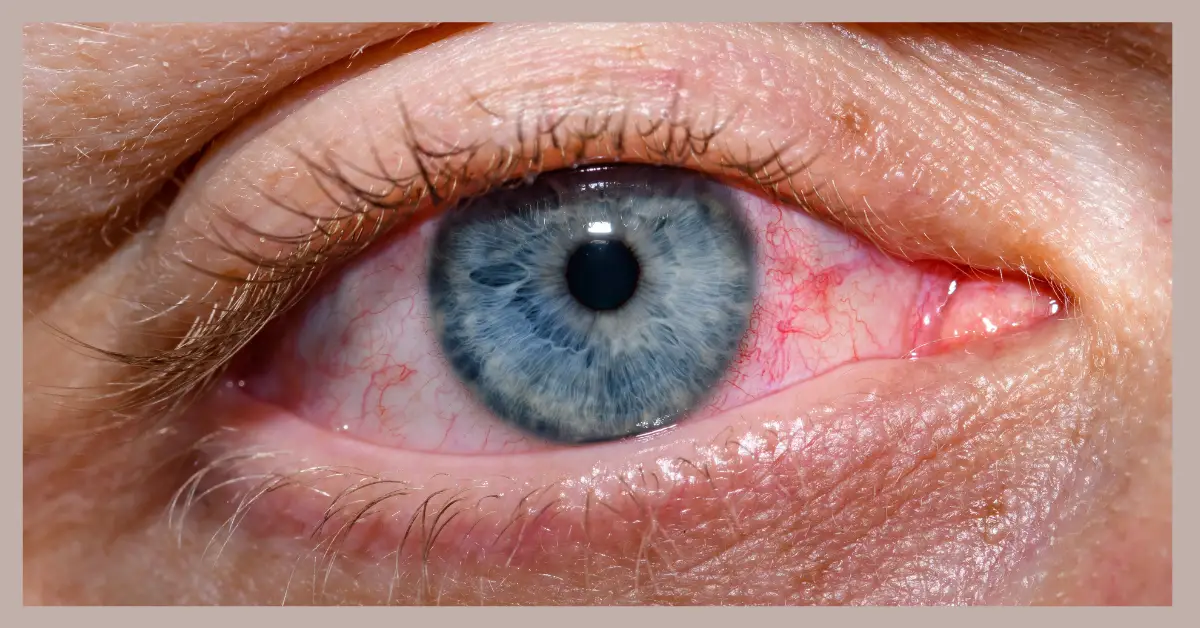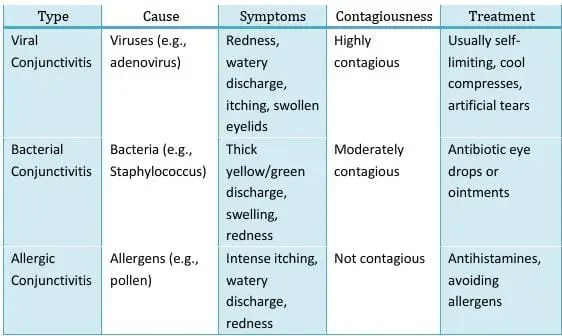
What is Ashob E chashm (conjunctivitis)?
Ashob e chashm is also called as pink eye or conjunctivitis. This disease can be viral, bacterial or allergic. Inflammation and swelling of the conjunctiva, a thin transparent layer covering the white part of the eye. Small blood vessels become swollen and look red and pink on the white part of the eye. In fact, the innermost part and outermost part of the eye becomes swollen in this condition. Apparently this disease is not dangerous unless you prevent it from spreading. If you don’t prevent to spread this disease, it will start to spread to a very dangerous level.
Types of Ashob e chashm (conjunctivitis)
Types of Conjunctivitis: Comparison Table

Causes and Symptoms of Ashob e Chashm
Ashob e chashm can result from three primary causes: viruses, bacteria, or allergens. The symptoms typically include redness, itching, discharge, and light sensitivity. However, the severity and nature of these symptoms depend on the underlying cause of the disease.
Specific Symptoms of Viral Conjunctivitis
Viral conjunctivitis requires special attention due to its ability to spread quickly. Key symptoms to note:
- Clear, watery discharge: The discharge is typically thinner and clear, distinguishing it from the bacterial type.
- Burning sensation: A characteristic of viral infections.
- Easily spreads to both eyes.
- Highly contagious: It spreads through hand-to-eye contact, contaminated objects, or even coughing and sneezing.
Due to its contagious nature, viral conjunctivitis can spread rapidly within schools, workplaces, and in families. While this type generally resolves on its own within 7–14 days, seeking medical advice is essential, especially if the condition worsens or affects vision.
How Ashob e Chashm Spreads
- Women often share makeup at social gatherings, weddings, or family events, which can quickly spread viral conjunctivitis (Ashob-e-Chashm). Viral particles from an infected person can remain on makeup products, and when others use them, they risk infecting their eyes.
- Touching the eyes with unwashed hands increases the risk of infection.
- Public places like gyms or swimming pools, are potential breeding grounds for the infection if hygiene is neglected.
- Close physical contact, such as handshakes or hugs, can spread the infection if hands touch the eyes afterward.
Treatment for Viral Conjunctivitis
Viral conjunctivitis often resolves on its own within 1–2 weeks. Treatment focuses on symptom relief:
- Cool compresses: Applying a clean, cool cloth to the eyes helps reduce inflammation and soothe discomfort.
- Artificial tears: These help lubricate the eyes and ease irritation.
- Avoid touching the eyes: This reduces the risk of spreading the infection to others. In severe cases, doctors may recommend antiviral medications if the infection is caused by the herpes simplex virus.
Prevention
Preventing the spread of conjunctivitis, especially viral, is crucial. Follow these tips to avoid spreading the infection:
- Wash your hands regularly.
- Avoid touching or rubbing your eyes.
- Do not share personal items like towels, makeup, or pillows.
- Disinfect surfaces regularly, including countertops and doorknobs.
- Dispose of contact lenses properly and clean glasses regularly.
The Spread of Ashob e Chashm in Pakistan in 2023
In 2023, Pakistan experienced a significant spread of Ashob e Chashm, particularly viral conjunctivitis, which became a widespread concern across various regions. Schools, offices, and public transportation became hotspots for the transmission of the infection. Seasonal factors, such as humidity and fluctuating temperatures, contributed to the virus thriving in many regions. The sharing of personal items among friends and family further accelerated the outbreak. Lack of awareness about proper eye hygiene and limited access to medical care in some regions allowed the infection to persist, affecting large numbers of people
Conclusion
If you or someone you know is experiencing symptoms of viral Ashob e Chashm, such as redness, itching, or discharge from the eyes, don’t hesitate to seek medical advice. Early intervention can help manage the infection effectively and prevent its spread. Share this article with friends and family to raise awareness about the importance of eye hygiene and the prevention of conjunctivitis. For more information on conjunctivitis (Ashob e chashm) click on this link!
Your eyes deserve the best care.
Interesting and infirmative
thank u